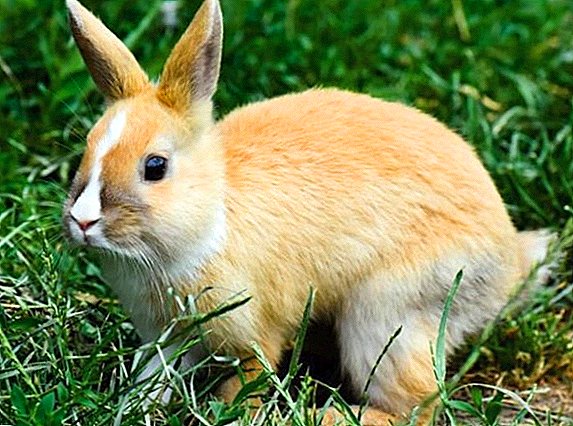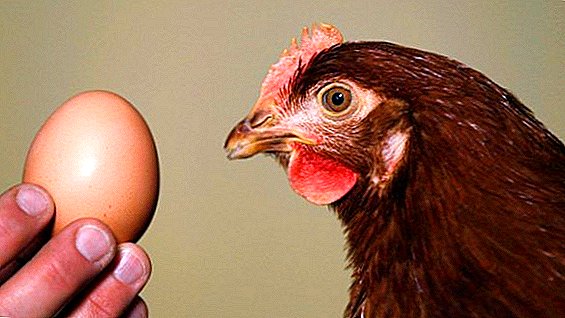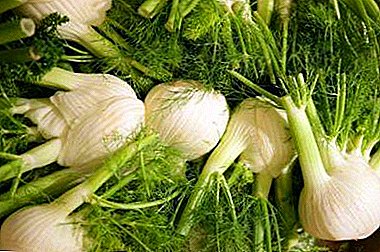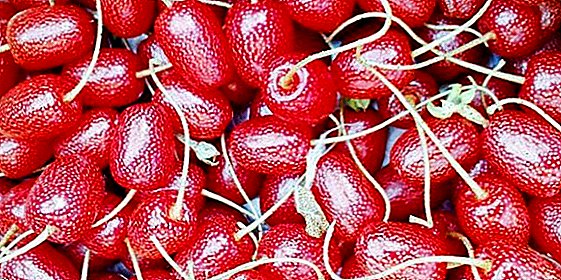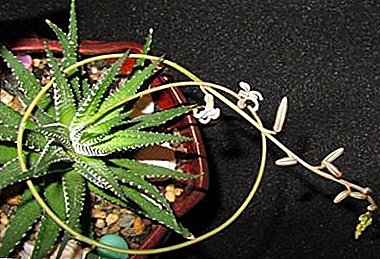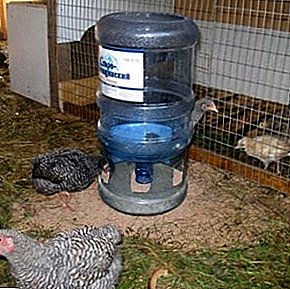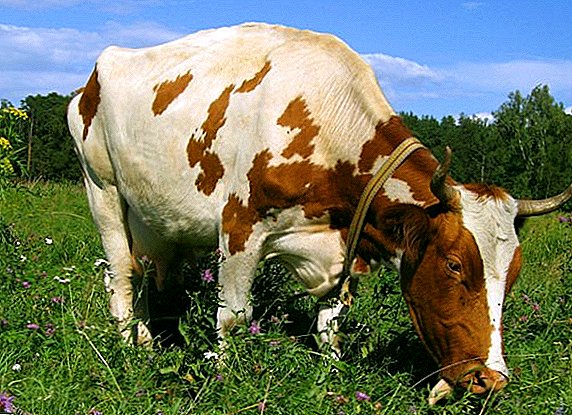 A well-thought-out diet and high quality food are very important elements in the care of livestock. For cows to gain weight and give milk properly, they must eat right. That is why a disease called tympania of the scar is so dangerous. Everyone who breeds cattle needs to know what are the main causes of this pathology, what forms can be found and how to cure an animal.
A well-thought-out diet and high quality food are very important elements in the care of livestock. For cows to gain weight and give milk properly, they must eat right. That is why a disease called tympania of the scar is so dangerous. Everyone who breeds cattle needs to know what are the main causes of this pathology, what forms can be found and how to cure an animal.
What is timpani in cows
Tympania is a non-communicable disease of cattle, during which they observe rapid and abundant gas formation, which causes a scar to swell up. The most common and frequent is an acute form of pathology that can lead to the death of a cow if it is not helped in time. 
Causes of gas accumulation in the rumen
There are a lot of reasons for this phenomenon. First of all, the appearance of pathology is associated with the feeding of light-weight feed:
- young green grass;
- clover;
- alfalfa;
- legumes;
- milky corn cobs;
- cabbage leaves and beets;
- broken pellet;
- rotten root vegetables;
- frozen potato;
- poisonous plants - aconite, autumn crocus, hemlock, poisonous milestone.
Important! Do not allow the use of lightly fertile cows that are warmed in a heap or wet in the rain. This may cause increased flatulence.
Also the causes of timpani can be:
- foreign bodies in the digestive organs;
- disorder of ruminants and belching;
- intestinal obstruction;
- blocking the book;
- febrile illnesses.

Forms and symptoms
There are several forms of tympania: acute, secondary and chronic. All of them are distinguished by their symptomatology.
Sharp
Main characteristics:
- appears due to the use of feed with rot, mold or other pathogenic bacteria;
- the scar is greatly increased, gases are quickly formed, the state of health is sharply deteriorating;
- often occurs with the formation of foam.
Read in more detail, than cows are ill.
Secondary
The secondary form occurs due to:
- blockage of the esophagus or pharynx;
- eating large food or garbage;
- the appearance of tumors;
- eating toxic herbs.

Chronic
The main features of the chronic form:
- occurs when destructive changes in the digestive system;
- often occurs with atony, overcrowding of the scar, bowel problems;
- happens in calves in the transitional period of feeding.
Did you know? Cows can learn from each other and are able to learn from their mistakes.
Diagnostics
The first manifestations of the disease is anxiety and refusal to eat. Then the signs become more pronounced:
- the animal constantly wags its tail, moos and hump;
- the cow lies down, then abruptly rises, beats itself with a hoof in the stomach;
- breathing is shallow, frequent; the cow breathes with an open mouth, coughs, foam flows from the mouth;
- increases heart rate.
 The most important diagnostic sign is an enlarged abdomen. The presence of pathology is indicated by a strong bulging of the left side - this is where the scar is located. In addition, an inspection will show the following:
The most important diagnostic sign is an enlarged abdomen. The presence of pathology is indicated by a strong bulging of the left side - this is where the scar is located. In addition, an inspection will show the following:
- when tympania, the hungry fossa is always strongly marked - if you knock on it, you can hear a sound like a drum;
- smooth muscle of the scar is not reduced;
- abdominal motility and bowel function are impaired;
- belching has an unpleasant smell;
- mucous membranes become bluish.
Important! Tympanus is one of the symptoms of the most dangerous anthrax, therefore, with the first symptoms of pathology, you should consult a veterinarian.
Treatment of bloating in a cow
Treat cattle from tympania need urgently, immediately after diagnosis. First of all, the scar is released from the accumulated gases and take measures to suspend their further excessive formation.
First aid
At first, the animal is poured cold water over the left iliac region or leads it to a cold river. You can try to lead the cow on a slow walk through elevated terrain. When the front part of a trunk rises, the stomachs depart from a diaphragm, reducing pressure. Because of this, the gas exchange in the lungs becomes better and the feed from the food hole in the rumen will be able to free itself naturally, and belching will appear. 
Sounding
To remove gases from the rumen, a probe or a tight hose is inserted into it. To make gases easier to discharge, it is better to put the front half of the body of an artiodactyl on a hill. The probe is pulled to itself so that its tip is at the level of the cardiac part of the esophagus, where excess gases are collected. The device performs reciprocating motion.
Learn how to treat such a violation of the digestive function as acidosis.
To resume burping, just pull the animal's tongue. Drugs for the treatment of acute timpanii a lot, but for each case they need to be selected individually. To adsorb gases, you can give the cow:
- fresh milk (2-3 liters);
- coal powder (vegetable or animal);
- burnt magnesia (20 grams).
To limit the fermentation processes give:
- 1 liter of an aqueous solution of ichthyol (2%);
- kerosene mixed with water (50-100 ml).
 Sounding Mixed timpani treat:
Sounding Mixed timpani treat:- Sicadena;
- tympanol;
- antiformal;
- FAMS;
- a solution of potassium permanganate (0.1%) - 2-3 liters;
- creolin;
- benzonaphol;
- acetylsalicylic acid.
 Washing the cow's stomach with a probe
Washing the cow's stomach with a probeYou can prepare a medical mixture, which consists of:
- kerosene - 0.5 cups;
- vodka - 1 cup;
- water - 2 cups.
Important! Do not give the cow kerosene in large quantities, as if in the near future it will have to lead to the forced slaughter, the meat will have the smell of kerosene.
Surgical intervention
If the effect of all the above actions is not observed, it is necessary to pierce the scar with a large-gauge trocar. Exclusively pierce the area of the left hungry fossa. It is located in the middle of the horizontal line that connects the maclock with the last edge.
- The hoofed must stand; it is securely fastened so that it cannot cause injury to a person.
- First prepare the field for the operation. Then, sharply and strongly pushing, the device is inserted in the direction of the right elbow.
- After the introduction of the device, it is necessary to remove the stylet from it and gradually release the accumulation of gases, from time to time closing the hole with a cotton disk. If the gases are discharged too quickly, the animal may faint.
- If the trocar sleeve is clogged with food, it should be cleaned with a stylet.
- After the gases are released, an antiseptic and anti-ferment solution is poured into the device opening.
- After all these manipulations, the trocar can be removed. To feed the masses did not get into the belly and did not cause an inflammatory process, the abdominal wall must be pushed back by hand when removing the trocar.
- The last stage of the procedure is to lubricate the site of the operation with iodine and to glue it with cotton wool, which has been soaked with collodion.
 Trocar puncture pattern
Trocar puncture patternWhen the animal is already relieved of bloating, he is prescribed a starvation diet for a period of up to a day, and then fed in a sparing mode. Thus, a cow should receive sugar beets, silage or hay 5-6 times a day, but in small portions. In order to further suppress putrefactive processes, the cow is given a solution of 500 ml of water and 2 tablespoons of hydrochloric acid. The motor functions of the scar restore massage and thermal procedures in the affected area.
Did you know? Cows can make friends with each other, and they express their sympathy for another individual by tender licking.
Prevention and feeding rules
To prevent timpani it is necessary to observe the following preventive measures:
- not to give the animals too much to graze in the clover fields, abundantly covered with grass meadows;
- the first two or three hours of grazing should occur in a place that is not rich in vegetation, and then, when the dew dries out, you can transfer the cows to more "cereal" places;
- do not lead cattle to graze after or during the rain;
- do not force cows to move actively and constantly during grazing;
- Do not graze animals on a rich grassy place for more than one hour;
- time to diagnose and provide treatment of gastrointestinal diseases.
 Feeding rules:
Feeding rules:- feed before grazing coarse food (straw, hay);
- limit the amount of succulent feed in animal nutrition;
- not to water animals shortly before the plentiful use of fresh grass and immediately after it;
- ensure that food is not spoiled.
Tympania is a disease that can take one by surprise and take a cow’s life in a very short time. Therefore, it is very important to seek professional help from specialists in time. However, the prevention of this pathology will significantly reduce the expenditure of energy, time and money for the treatment of livestock, as well as help maintain its health.


